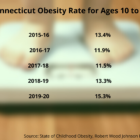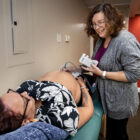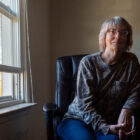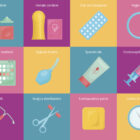I-Team In-Depth
The Migraine Breakthrough
|
Migraines have baffled humankind at least as far back as the ancient Egyptians, who blamed the excruciating headaches, and their often-accompanying visual auras and nausea, on the supernatural. Now, in a development doctors are calling revolutionary, an international group of neurologists has deciphered the mystery of why people get migraines and, in doing so, has determined how to greatly reduce their frequency and severity. The discovery “has revolutionized our treatment of migraine,” said Dr. P. Christopher H. Gottschalk, a neurologist at Yale Medicine and a professor of neurology at the Yale School of Medicine. “I’m witnessing a change in the landscape,” said Dr. Sandhya Mehla, a headache specialist and vascular neurologist with Hartford HealthCare Medical Group. “I would say this is a milestone.”
The discovery, the fruit of 40 years of research, won four scientists in Sweden, Denmark and the United States the 2021 Brain Prize, the world’s most prestigious award in neurology.









